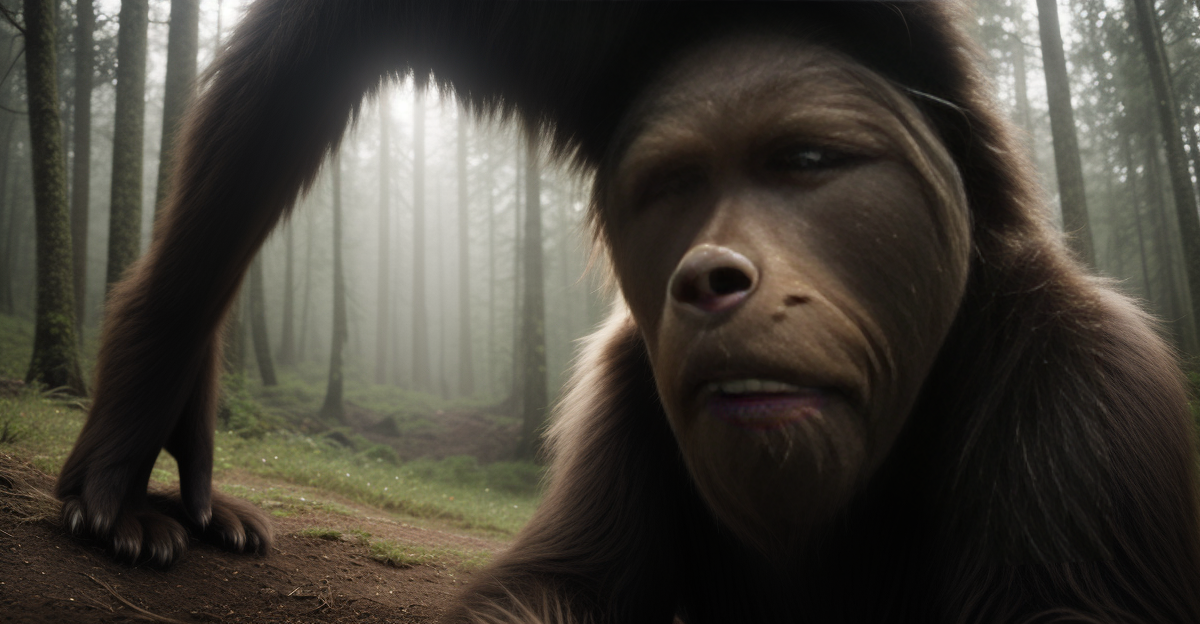
Is Bigfoot DNA a contaminated mess or a suppressed truth? We explore the controversies, contaminatio
Alright, fellow truth-seekers, Quill here, ready to plunge headfirst into another fascinating enigma! Today’s obsession? Bigfoot DNA. Is it the key to unlocking the secrets of our favorite cryptid, or just a load of bunk designed to boost documentary sales and attract tourists to the misty Pacific Northwest? More importantly, are the *genuine* findings being deliberately kept from us?! We’re going to delve into the purported Bigfoot DNA discoveries, dissect the persistent problems of contamination, and even don our most skeptical hats to explore the possibility of a good old-fashioned cover-up. Hold on tight, because things are about to get strange. ### The Saga of the Samples: A History of Bigfoot DNA Claims Throughout the years, numerous cases have surfaced, all claiming to have cracked the code of Sasquatch DNA. Remember the infamous Ketchum study from years ago? Dr. Melba Ketchum and her team asserted they had sequenced Bigfoot DNA, revealing it to be a hybrid of human and an unknown hominin. The internet exploded! Then we have Dr. Jeff Meldrum, a respected physical anthropologist who has dedicated a considerable portion of his career to Bigfoot research. He, too, has claimed to have gathered samples with the potential to contain Bigfoot DNA. The initial excitement surrounding these claims was undeniable, particularly for those who believe. However, like a grainy Bigfoot photograph, the initial buzz quickly dissipated under the unforgiving glare of scientific scrutiny. Skepticism inevitably emerged, and with good reason, which brings us to our next critical point… ### Contamination: Cryptozoology’s Achilles Heel Here’s the fundamental issue with DNA: it’s ubiquitous. You constantly shed it. Your pets shed it. Even that pesky mosquito buzzing around your ear is shedding DNA. This makes obtaining uncontaminated samples in the field an incredibly difficult undertaking, especially when dealing with something as elusive as Bigfoot. Consider this scenario. You’re trekking through dense woods, collecting hair samples from a tree where you *believe* Bigfoot might have scratched its back. In the process, you’re undoubtedly shedding your own DNA! Compound that with the potential for contamination from other animals inhabiting the area, and you’ve created a genetic mishmash that’s about as reliable as a weather forecast six months out. Even within the controlled environment of a sterile lab, contamination remains a persistent threat. A single stray sneeze, a contaminated pipette – any of these can skew the results. This underscores the importance of adhering to strict protocols and implementing multiple controls. ### Peer Review: Where Bigfoot DNA Dreams Often Go to Die Peer review serves as the bedrock of scientific validation. It’s the process by which other experts in the relevant field rigorously examine your research, meticulously searching for flaws in your methodology, analysis, and conclusions. It’s essentially the scientific equivalent of having your most critical professor grade your thesis. The challenge lies in the fact that publishing Bigfoot DNA research in reputable scientific journals is notoriously difficult. Why? Because the burden of proof is extraordinarily high, and the potential for contamination and misinterpretation is substantial. Without the validation of peer review, these studies lack the credibility needed to persuade the broader scientific community. It’s akin to claiming you discovered Atlantis based solely on a vivid dream you experienced after indulging in too much late-night pizza. ### Conspiracy Theories: They’re Out There… Somewhere Alright, time for the fun part! What if the reason we haven’t obtained definitive proof of Bigfoot DNA isn’t because it doesn’t exist, but rather because someone is actively suppressing it? Dun dun DUUUN! The argument typically goes something like this: powerful institutions or government agencies might be intentionally suppressing Bigfoot evidence to safeguard established scientific paradigms (the prevailing understanding of the world), protect vested economic interests (such as the logging industry), or even for reasons of national security (because, why not?). Is it far-fetched? Undoubtedly. But is it entirely impossible? Well… that hinges on your level of trust in authority. And, of course, whether you believe in Bigfoot to begin with. What are your thoughts on this intriguing possibility? ### Beyond the Double Helix: Alternative Evidence and Plausible Explanations While DNA stands as the gold standard for identification, it’s not the only form of evidence in the Bigfoot arena. We also have eyewitness sightings, footprints, and vocalizations. However, these are all notoriously unreliable. Sightings are often cases of misidentification, footprints can be easily faked, and vocalizations can often be attributed to known animal species. Furthermore, let’s not dismiss the possibility of simple misidentification. Perhaps those DNA samples aren’t from Bigfoot at all, but rather from some other, yet-to-be-discovered animal species. Or, dare I suggest it, maybe some of them are simply elaborate hoaxes designed to deceive. So, what’s the ultimate takeaway from all of this? We’ve explored the history of claimed Bigfoot DNA discoveries, the persistent challenges posed by contamination, the hurdles of peer review, and the potential for both legitimate scientific skepticism and alleged suppression. Is the elusive Bigfoot destined to remain an enduring mystery, or will future scientific breakthroughs finally unlock the truth concealed within its DNA? Only time (and perhaps a meticulously clean laboratory) will ultimately reveal the answer. What do YOU think about the possibility of suppressed Bigfoot DNA evidence? Share your thoughts and theories in the comments below! And don’t forget to click that follow button for more captivating explorations into the weird and wonderful realms of science and speculation!
Enjoyed this? Check out our YouTube channel for video versions!
Enjoyed this? Check out our YouTube channel for video versions!



